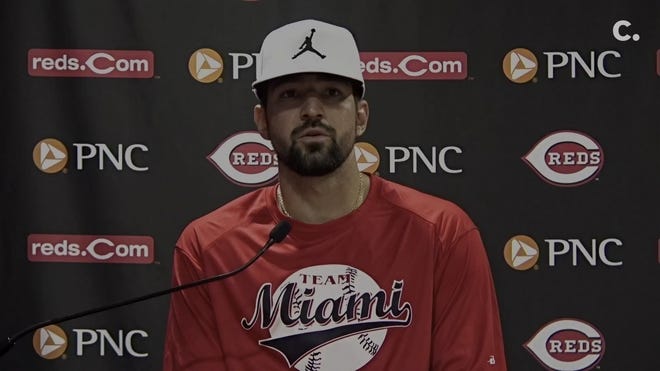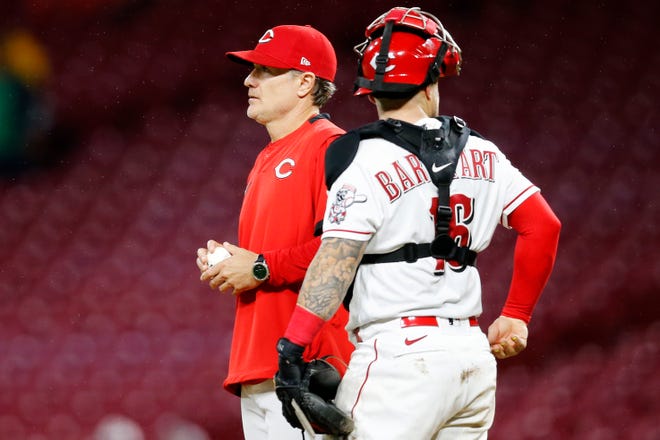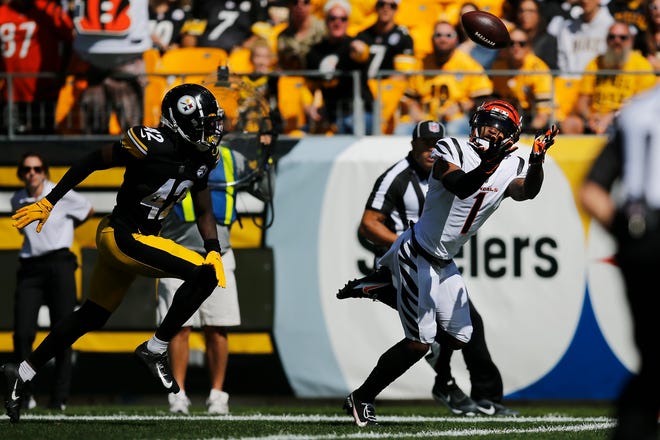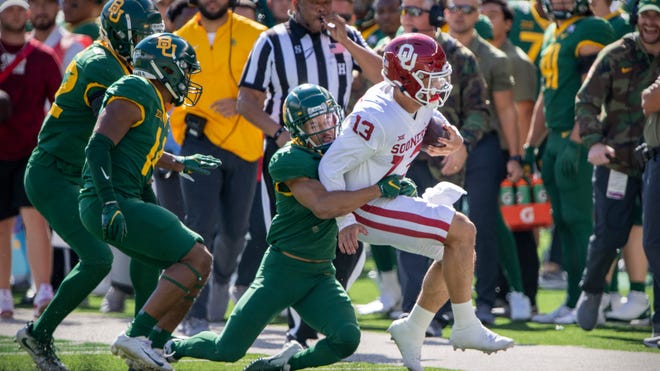
For as much as the Cincinnati Reds organization has evolved over the last decade, general manager Nick Krall said the role of the manager hasn’t changed that much.
On one hand, the Reds are making more data-driven decisions, tweaking the starting lineup more often and turning over the roster more frequently than they used to do. But according to Krall, the most important part of the job is the same.
“It’s all about managing the players in the clubhouse,” Krall said. “It’s just managing people. It’s been the same. You have different personalities coming in now, but no matter what, it’s about managing that group of people in the clubhouse.”

On Wednesday, the Reds announced that manager David Bell received a two-year contract extension.
When the players on the Reds roster spoke about Bell’s contributions during the season, most of them highlighted his approach in the clubhouse. While the impact that approach had is impossible to quantify, Bell has also been responsible for the key on-field decisions that defined the Reds season.
Here’s how Bell put his stamp on the 2021 Reds during the regular season.
1. Shuffling the starting lineup to give Tyler Naquin a shot
Reds outfielder Tyler Naquin received most of his playing time early in the season due to a series of consecutive coincidences. In the first week of the year, Naquin started in center field when Nick Senzel tweaked his shoulder. Then Naquin received playing time in left because Jesse Winker got sick. Then Naquin started two games in right because Nick Castellanos received a suspension.

By the end of the month, Naquin was hitting well enough to bat at the top and in the middle third of the Reds order. Bell wanted to give Naquin more playing time, and that required a buy-in from the Reds former No. 2 pick.
Nick Senzel:The winding journey of Nick Senzel's career with the Cincinnati Reds
Senzel has said he approached the coaching staff about a “Swiss-army hybrid role” where he’d play the infield and the outfield. Bell got Naquin’s bat in the lineup and kept Senzel as a regular contributor. It went well enough that even when Shogo Akiyama returned from the injured list, Bell stuck with that formula with the starting lineup.
2. Trusting Tyler Stephenson to play first base
When Joey Votto and Mike Moustakas both went on the injured list in the middle of May, the Reds didn’t have many options in the starting infield. The conventional choices were to make Alex Blandino, Max Schrock or Mike Freeman an every day starter at first base.
Instead, Bell gave catcher Tyler Stephenson his first regular playing time in MLB. With Stephenson playing first base for the first time in his professional career, Stephenson had more at-bats in May than he has had in any other month this season. He used that opportunity as a springboard and adjusted to Major League pitching.
More:'We feel he's the right guy': Reds manager David Bell agrees to 2-year contract extension
Stephenson benefited from the opportunity, he now leads NL rookies with a .279 batting average.

3. Moving Jonathan India to the top of the order
It’s easy to forget that for the first month of the season, the Reds had the best lead-off hitter in baseball. Winker spent the early part of the season at the top of the Reds lineup, but in late April the Reds went on a seven-game losing streak as the offense struggled.
Bell changed the starting lineup and gave Senzel, Alex Blandino and Eugenio Suárez the chance to lead off. When Jonathan India had a stretch of success in the middle of May, India received an opportunity to hit at the top of the order.
It was one of the most impactful lineup decisions Bell made all year.
More:Reds call up Dauri Moreta after standout minor-league season; Mike Moustakas injured
“He's leading everything off for us and leading the way,” Bell said this week. “He's a young player who has great leadership abilities without even trying to do anything. He's just so natural. He's grown as a player right before our eyes.”

4. Letting Tucker Barnhart find a rhythm with Wade Miley
It might have started out as a coincidence as Tucker Barnhart kept catching starting pitcher Wade Miley early in the season. Barnhart was in a platoon with Stephenson, but the Reds only faced opposing right-handed pitchers until July in Miley’s starts.
As a result, Barnhart was always catching Miley. When Miley matched up against an opposing left-handed starter, in a pivotal July game against the first place Milwaukee Brewers, Bell still let Barnhart catch for Miley. In that game, Miley pitched eight scoreless innings.
Miley was the Reds most consistent starting pitcher between April and August, and he often credited his rhythm with Barnhart as a key factor in his success. The Barnhart and Miley combination was the only example of a personal catcher that the Reds had this season, but it worked for Miley for most of the season.

5. Sticking with Eugenio Suárez
Bell kept Suárez as an every day starter until August. While Suárez hit in the .170s, Bell was aggressive in trying to find ways to turn around Suárez’s season.
In May, Bell moved Suárez back to third base. Then, Bell made Suárez the lead-off hitter for a week. Suárez slipped down the lineup over the next three months while working with the coaching staff on different strategies and different techniques. At one point of the year, Bell put Suárez on the bench for two games like Bell did with Votto in 2020.
More:Reds reliever Lucas Sims has transformed into one of the league's best strikeout artists
When Moustakas came off the injured list in August, Bell platooned Moustakas and Suárez depending on the opposing starting pitcher. Moustakas and Suárez had both been every day starters for nearly their entire careers, but Bell had them platoon for the first time.
6. Evolving the strategy in the Reds bullpen
For the first time in his three-year tenure with the Reds, Bell didn’t have a closer at any point of the 2021 season. Instead, he had two pitchers designated for high-leverage situations, with one of those situations coming in the ninth inning.
The Rule of Two:Explaining how Cincinnati Reds manager David Bell uses his closers
Before every game, Bell met with the relievers to communicate their roles for the upcoming game. Those roles changed significantly during the season, but former Reds reliever and veteran Sean Doolittle said it helped the team prepare for the game.

When the bullpen was at its weakest in July, Bell used matchups more often to determine which reliever came out of the bullpen. Amir Garrett was one of the Reds closers in July and August, and Doolittle also frequently pitched in high-leverage situations.
More:Reds notes: How the Reds coaching staff turned infielders into outfielders
In September, the Reds bullpen has been at its strongest with five relievers pitching at a high level. Since those five pitchers are right-handed, Bell is almost never using left-right matchups to manage his bullpen. The Reds designated Doolittle for assignment, and Garrett and Justin Wilson have pitched in just one of the Reds seven wins in September.
7. Platooning more as more injuries hit the team
At the start of the season, catcher was the only position where the Reds had a true platoon. Stephenson and Barnhart split time at that position, but the rest of the lineup was made up of every day starters.
As the season continued and more players went on the injured list, Bell used platooning more frequently as a potential solution. Over the last week, the Reds have had platoons at four different positions. In addition to catcher, Suárez and Moustakas platooned at third base before Moustakas went on the injured list.
In the outfield, Max Schrock and TJ Friedl have been starting against right-handed pitchers while Delino DeShields, Aristides Aquino and Jose Barrero split time in the outfield against left-handed starters.
With Schrock and Barrero, Bell showed a willingness to teach players a new position to get their bats into the lineup. For a team that started its 2021 season by temporarily moving Suárez from third base to shortstop, it was a full-circle moment.
Source link








